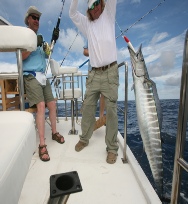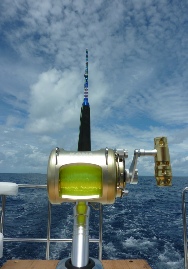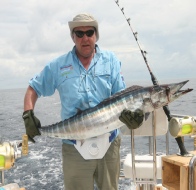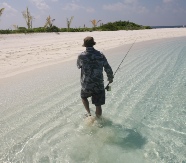© 2014 Gary Smith Fishing Ltd All Rights Reserved










Proudly Associated With


I have had several e-mails from readers asking me about Bass fishing from the shore, what bait to use, what rig and what time of day is best to catch them.
A couple of weeks ago we started filming for a DVD on Mediterranean shore fishing but the weather was dull and cold so filming was halted until the sun shone. I had ended up with lots of bait that would not last so I rang my friend Pete and suggested having a few hours fishing for Bass or Lubina as they are known in Spanish.
So off we went to one of our favourite locations, Isla Plana beach just outside Puerto De Mazarron and I set up three rods - one three piece TC Surf 4.20 metre surfcaster and two 4.20 metre telescopics. The two telescopics had spools loaded with 0.40 mm 10 kg line and the TC Surf three piece spool was loaded with 0.14 5 kg line and a tapered shock leader. All three had two hook paternosters with size twelve hooks on 35 mm traces from the bottom and 25 mm traces from the top. These were loaded with Coreano worms on the top hooks and Americana worms on the bottom hooks. These were threaded over the hook and line using a baiting needle.
It was just coming up to four o´clock in the afternoon, the sea was choppy but not rough, sandy bottom, perfect conditions I thought. The waves were raking back the sand on the drop off just into the surf; this attracts the smaller bass to feed very near the shore. I cast the TC Surf out 100 metres, one telescopic 50 metres and the other telescopic 15 metres, this would cover all the most likely catch areas with the telescopic rods and the TC Surf would be offering bait to maybe Sea Bream (Magret) or other species further out from the shoreline.
After an hour neither I nor Pete had seen any indication of a bite on our rods. Pete had set two rods out at 30 metres and 50 metres respectively. Just after five o’clock one of the telescopics nodded and although not a big fish at least it was something. I reeled it in, this was the one out at 15 metres, and it was an Areña (Weever) one of the most dangerous fish around. Only a small example but we dispatched it straight back into the sea. I have explained in previous articles how dangerous the dorsal and gill spikes are on these fish. If you catch one do not touch it, it is as simple as that.
So after this we decided that the fish must be starting to feed. We reloaded the bait on all the rods and cast out and sat back with baited breath…..so to speak. Ten minutes later the tip of my telescopic out at 50 metres nearly hit the water, it really banged and as I took the reel handle it was obvious this fish was a fighter, I backed off the spool clutch a little and started to retrieve my quarry. The fish was heading to my right and diving to the seabed. I let it run a little, but was concerned that, if it found rocks or weed, I would lose it. I started to reel in again by raising the rod then reeling in the slack line, this would keep the fish higher in the water. After a fight I brought the fish to the shore and slewed it onto the sand, it was a good catch, 800 grams and 48 centimetres in length. Caught on the top hook of the paternoster with the Coreano worm bait on size 12 hook. Afterwards I did think how lucky I had been not to lose this fish as the hook line is only 0.22 mm so there is a lot to be said for using good quality hook and line. Especially as it had swallowed the hook and the line had been at the mercy of the rows of teeth and a throat muscle that crush peeler crabs with ease!
After the excitement was over it suddenly dawned on us it would be a good idea to get Dave and Karen, who are making the film, to record this wonderful fish on film which they did amidst much talk of sods law and the like. We caught four more Bass, two each, all between 25 and 30 centimetres in length but decent fish all the same and all caught at 15 metres. This is a good time of year for this fish so get out there and have a go.
Registered Copyright © Gary Smith & Luigi Mateos
Back
| Address |
| Contact Us |
